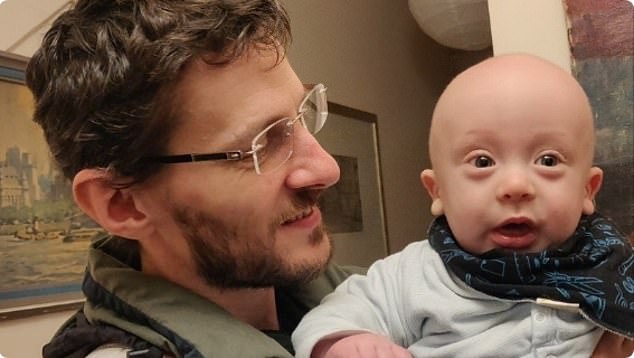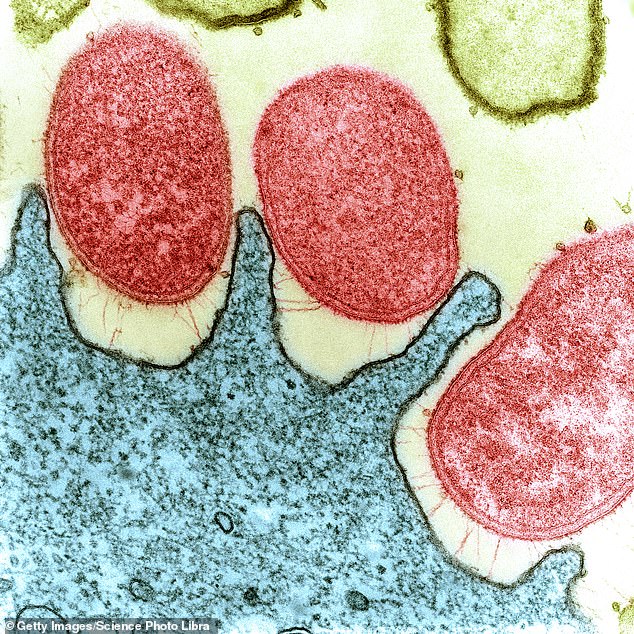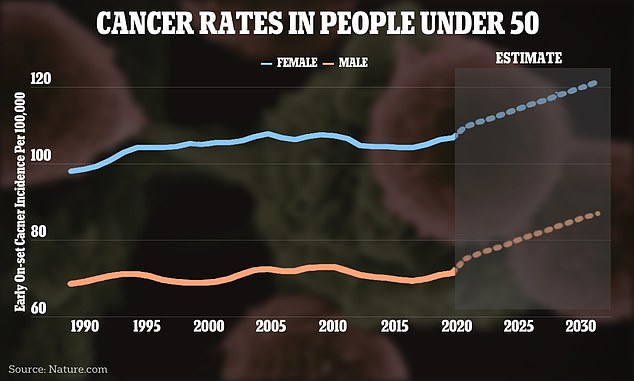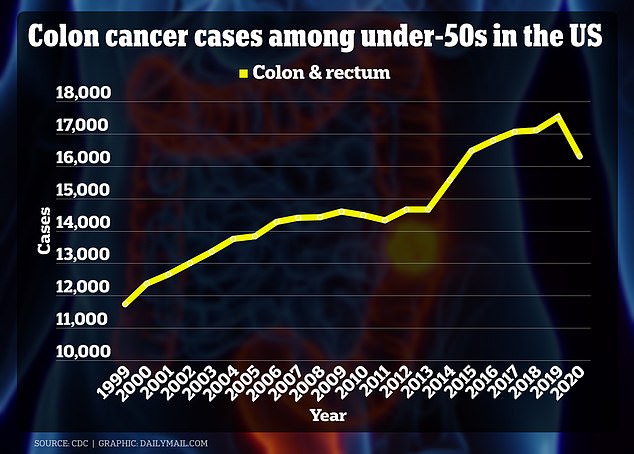New theory that could explain ‘disturbing’ rise in young people with stomach cancer – doctors suspect a common infection could be to blame
Scientists are investigating the causes of stomach cancer after a ‘worrying’ rise in the number of young adults with the disease.
Although cases are falling among older people, there has been a two percent annual increase among the over-50s in recent years, leaving experts baffled.
Worryingly, in half of these cases the cancer is already at an advanced stage – meaning it is ‘almost a death sentence’, with a survival rate of just four per cent.
Now concerned doctors have launched a new investigation to find out whether the common bacterium H. pylori, which also causes stomach ulcers, could be to blame.
If the theory is correct, it opens the possibility that simple antibiotics could be offered to high-risk patients in an attempt to prevent cancer from ever developing.
Zak Wilcox was 40 and was diagnosed with stomach cancer. He died just three months later, and his mother believes H. pylori, picked up in his teens, could have been to blame

Zak with his cousin, days after his terminal cancer diagnosis. Doctors have launched a new study to find out if H. pylori could be responsible for the rise in young stomach cancers
Dr Jessica Sheth Bhutada, a pediatric oncologist at Children’s Hospital Los Angeles, was part of the team that first mapped the rise in the number of younger stomach cancer patients.
She told me healio.com: ‘We have no clear reason why this is happening; it is a global phenomenon.
‘There is no literature that can explain why we are seeing this disturbing trend.
‘We have some ideas, because we know that potential in colorectal cancer [triggers] include changes in dietary patterns, antibiotic use and changes in the gut microbiome.
‘However, there are no studies investigating whether and how this is linked to the rising incidence of stomach cancer.’
This, says Dr. Sheth Bhutada, inspired her current research.
‘[We want] to try to understand why young adults get stomach cancer and how we can potentially detect it earlier and even prevent it,” she said.
‘The goal is to do a multi-level analysis of individual factors, such as chronic H. pylori infection, the risk of obesity and connect that to the patient’s neighborhood risk factors, such as living in food deserts . [a neighborhood with limited access to fresh and nutritious produce] or access to healthcare.
“How do these affect a person’s risk of developing stomach cancer, especially when young?”
H. pylori, or Helicobacter pylori, is a type of bacteria that 40 percent of people carry in their stomachs.
In 80 to 90 percent of cases, it causes no symptoms, but it can cause stomach ulcers, digestive problems, bloating, or nausea.
H. pylori can be detected with a blood, breath or stool test – and treated with antibiotics and other medications.
Long-term H. pylori infection is known to be a cause of some stomach cancers in older adults.

A stained microscope image of a human stomach (blue) infected with Helicobacter pylori bacteria (red)
Other factors, such as smoking and diet, can increase the risk of H. pylori leading to cancer, according to Cancer Research UK.
In China, aggressive testing and treatment of the bug has led to a decline in cases.
Dr. However, Sheth Bhutada said: ‘The challenge is that we do not know to what extent H. pylori infection causes gastric cancer in young adults and whether [the Chinese approach] would be an effective strategy.”
One young patient, Zak Wilcox, was only 40 when he died of stomach cancer in 2021.
According to Daily Mail, his mother Rebecca believes he became infected with H. pylori during a backpacking trip to India in his late teens.
In India, H. pylori is transmitted by 80 percent of the population and Zak developed a food poisoning-like illness.
In the years that followed, he suffered from digestive problems before more severe stomach pain prompted a visit to his GP, which landed him in hospital.

Knowledgeable young people may ignore the symptoms of stomach cancer, meaning cases are not diagnosed until the disease is advanced and incurable

The graph above shows the change in rates of premature cancer around the world, broken down by women (pink) and men (blue)

The number of colon cancer cases among people under 50 is increasing in the US, as shown in the graph above. There has been a decline in 2020 as the Covid pandemic led to fewer people registering for screenings
Speaking about his diagnosis in 2020, Ms Wilcox said: ‘I couldn’t believe Zak had cancer – he was apparently fit and healthy, had a good diet and only drank socially. It was terrible.’
The software engineer died just three months after the tumor was discovered.
Ms Wilcox has since launched a campaign to raise awareness about a £7 test that can detect H. pylori – at change.org.
The new research comes amid growing concerns that more adults under the age of 50 are developing cancer than ever before.
According to a 2023 international analysis, the number of young diagnoses – of all kinds – has increased by 80 percent worldwide over the past thirty years.
Cancer deaths among adults aged 40, 30 or younger grew by 27 percent over the same period.
Although the reason for this is not yet fully understood, earlier this year Professor Charles Swanton, oncologist and chief medical officer at Cancer Research UK, highlighted concerns about the increasing consumption of ultra-processed foods and colorectal cancers.
Speaking at the annual meeting of the American Society of Clinical Oncology, he said studies have shown that some early-onset cases may be “initiated” by bacteria in the gut that are common in those on low-fiber, high-sugar diets.
Dr. Sheth Bhutada added: ‘I’m afraid diet is a big factor [in stomach cancers too]but we don’t know what specific nutritional risk factors exist.
‘For example, we know that for colorectal cancer, a high-fiber diet and limited exposure to red meat can be useful preventive measures, but the stomach environment is different from the colon.
‘This highlights the fact that little is known about this disease, especially in younger patients.
‘We expect to have some publishable results within the next six to 12 months so we can finally start making an impact on this deadly disease.”
